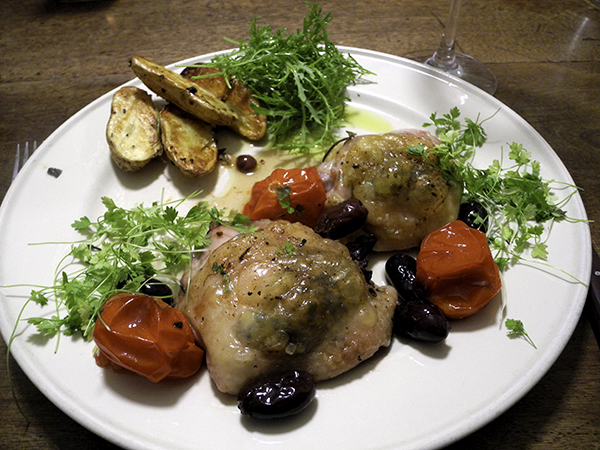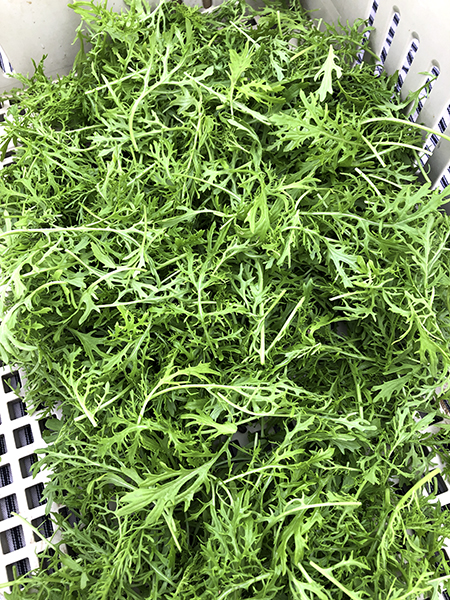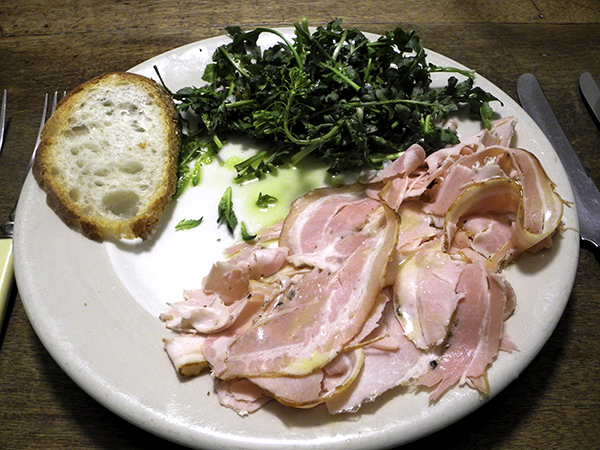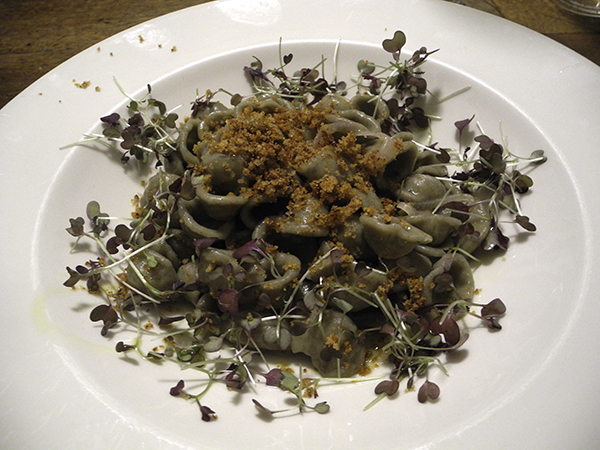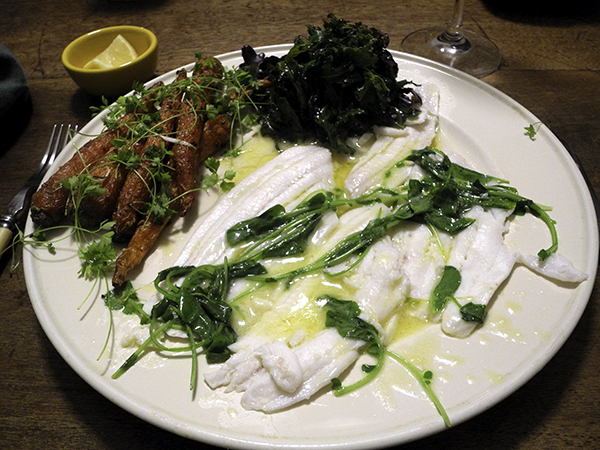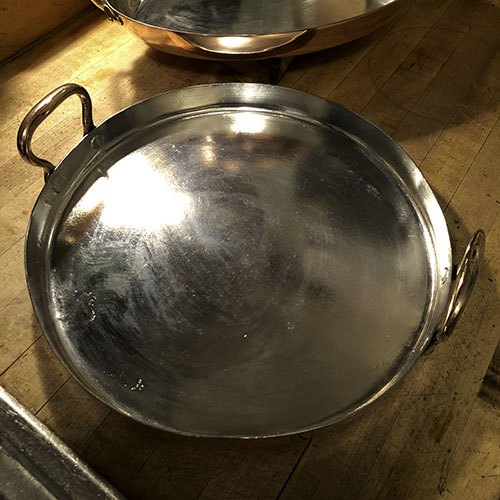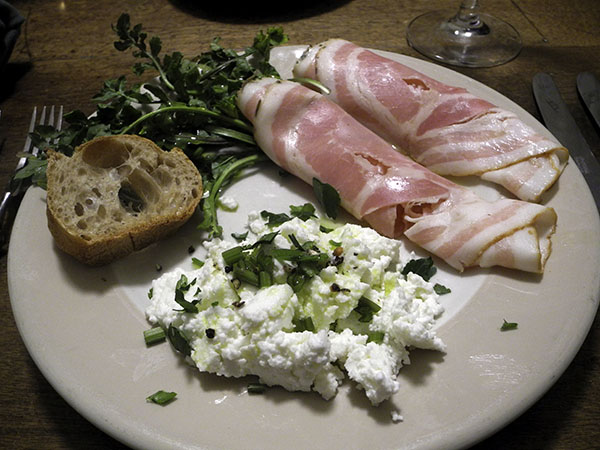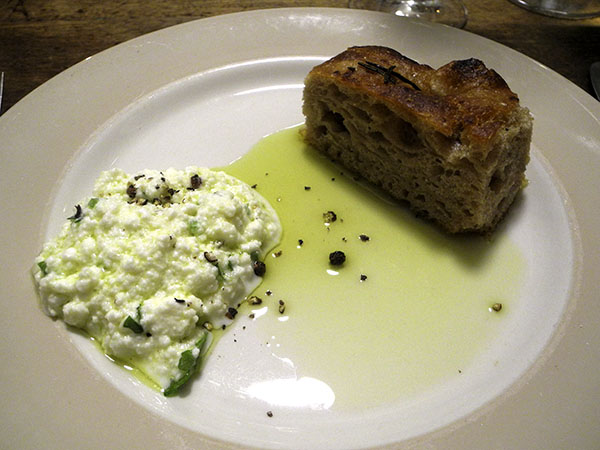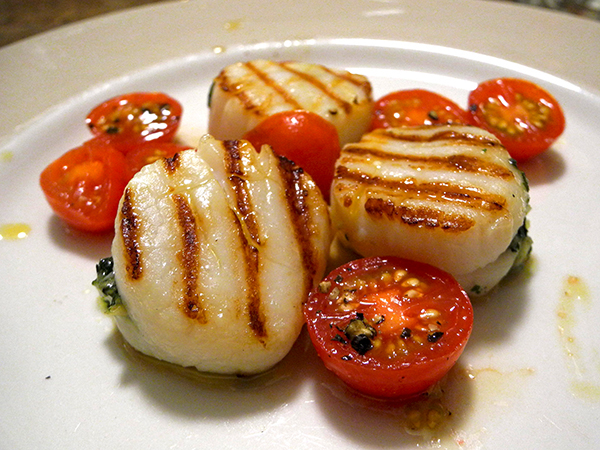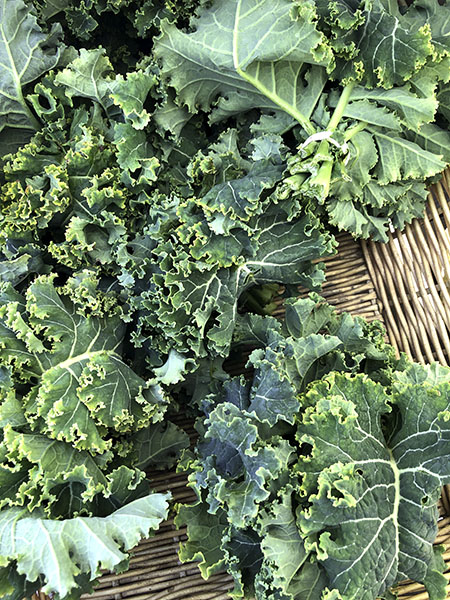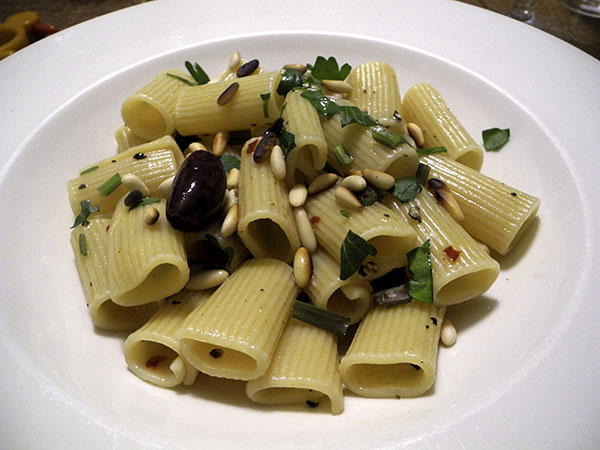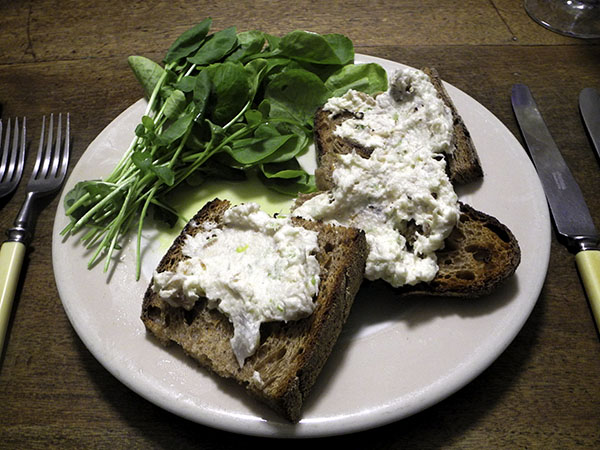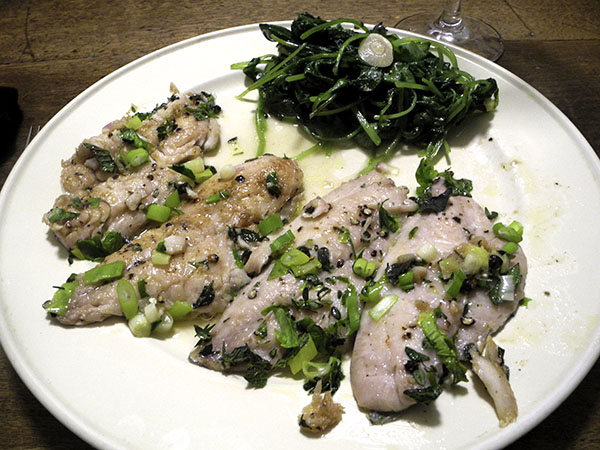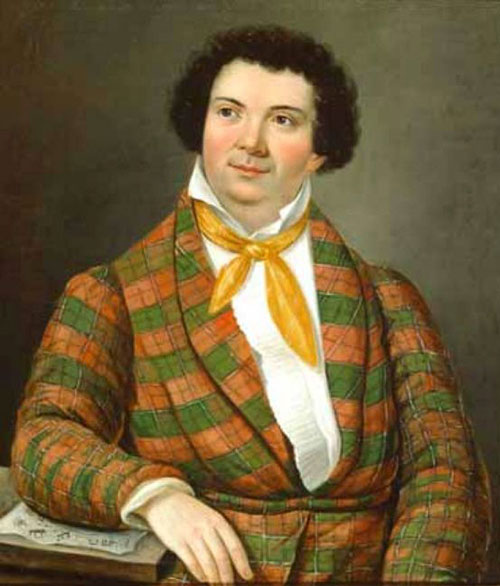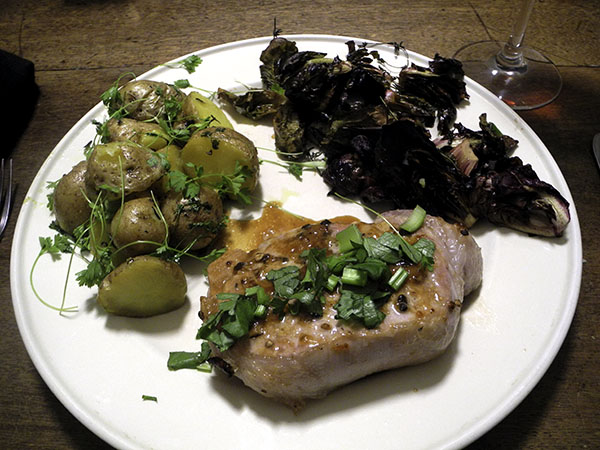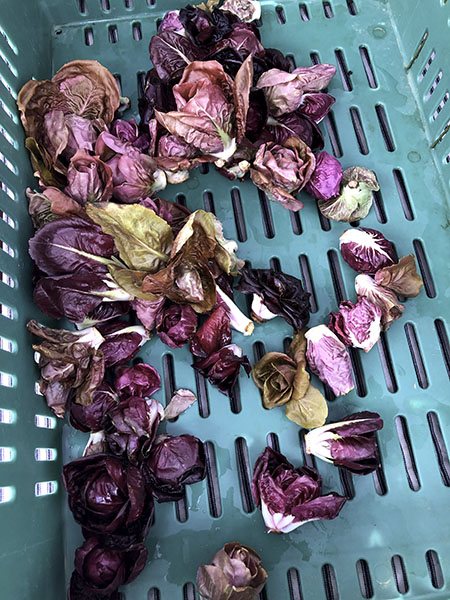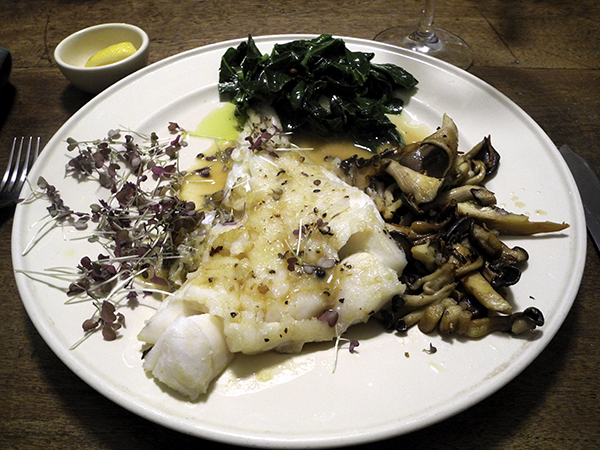
It was a beautiful balanced meal, beyond the picture, and it included a delicious real Chablis and a fascinating 100-year-old mystical opera that could have been written yesterday.
The haddock was really fresh, and with more than a little luck, I managed to cook it perfectly; the mushrooms also ended up just right, that is, cooked only to the point where they began to soften, but still with some body, and although there were more of them than I normally have in an accompaniment for fish, they were so good I felt there still weren’t enough. Even the small/subtle taste of the micro greens really showed through, since the fish was cooked so minimally, and, finally, the large greens, the collards, were a perfect, sweet foil for the featured players on the plates.
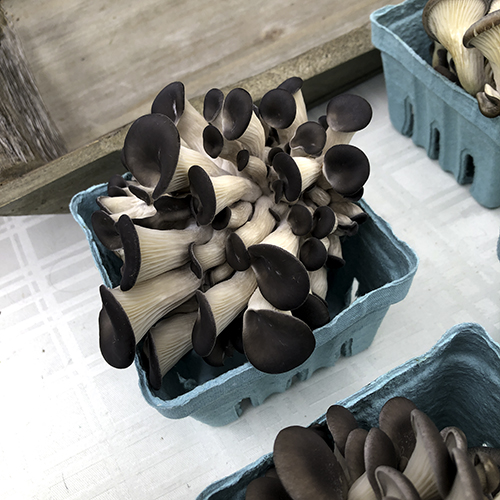
- two tablespoons of olive oil heated inside a vintage thick-walled tin-lined copper 14-inch oval sauté pan over medium-high heat until barely starting to smoke, 7 ounces of sliced oyster mushrooms from Blue Oyster Cultivation tossed in, seasoned with sea salt, freshly-ground black pepper, and a pinch of a combination of 2 peppers (crushed home-dried light-colored habanada purchased fresh the year before from Norwich Meadows Farm, and hickory-smoked Jamaican Scotch bonnet from Eckerton Hill Farm last fall, cooked, stirring occasionally, until well browned, or 3 to 4 minutes, transferred to warmed plates (in a warm oven, door ajar), and set aside, the pan wiped dry, an additional tablespoon of olive oil added, the flame turned up to medium-high and, once the oil was shimmering, the mushrooms replaced by one 15-ounce haddock fillet from P.E. & D.D. Seafood that had first been halved crosswise and seasoned with salt and pepper, cooked, flesh sides down, and without moving until well browned, or for about 3 minutes, carefully flipped over and cooked on the skin side until the fish was just cooked through, or about 2 minutes longer, transferred to the plates next to the mushrooms, while about three quarters of a cup of good low-sodium vegetable stock was added to the same pan and cooked over high heat until reduced by at least half, the pan removed from the flame and 2 tablespoons of butter and 2 tablespoons of Chelsea Whole Foods Market organic lemon stirred in, the sauce seasoned to taste with pepper, and, if needed, pepper as well, before being poured over both the fish and the mushrooms, the haddock finished with a garnish of micro red mustard from Windfall Farms, with lemon wedges served on the side [this Serious Eats rechelped bring the fish and the mushrooms to the table]
I can’t continue without relaying my most recent story about mushrooms, from the Wikipedia entry for Johann Schobert, because it involves two of my favorite things, mushrooms and music:
“In 1767, Schobert went mushroom picking with his family in Le Pré-Saint-Gervais near Paris. He tried to have a local chef prepare them, but was told they were poisonous. After trying again at a restaurant at Bois de Boulogne, and being incorrectly told by a doctor acquaintance of his that the mushrooms were edible, he decided to use them to make a soup at home. Schobert, his wife, all but one of their children, and his doctor friend died.”
Lesson: trust the experts (most of them anyway).
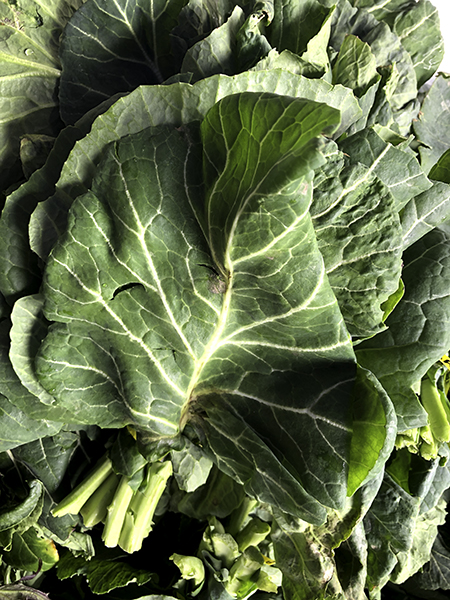
- one small bunch of collard greens from Norwich Meadows Farm, the stems removed, washed 3 times, drained (some of the water retained and held aside to be added, as necessary, while the greens cooked), roughly chopped, braised gently until barely wilted inside a medium size, antique copper pot in which 2 cloves of garlic, also from Windfall Farms, had been heated until they had softened, seasoned with salt and black pepper, finished with a small drizzle of olive oil
- the wine was a French (Burgundy/Chablis) white, Vincent Mothe Chablis 2017, from Crush Wine and Spirits
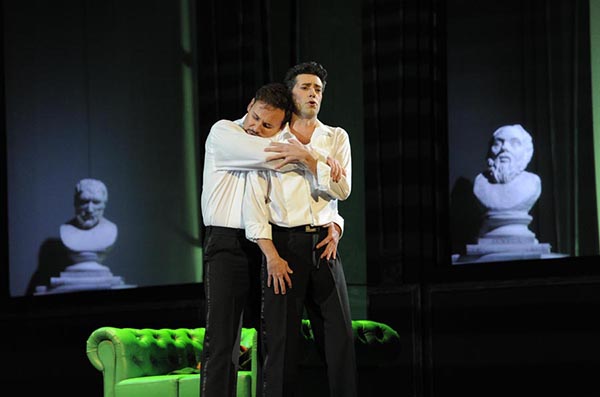
- the music was Karol Szymanowski’s 1918-1924 “Sicilian drama”, ‘Król Roger (King Roger), Simon Rattle conducting the City of Birmingham Symphony Orchestra, the City of Birmingham Symphony Youth Chorus, and the City of Birmingham Symphony Chorus [from the liner notes: “In 12th Century Sicily, a mysterious shepherd speaking of a god of beauty, sensuality and (sexual) liberation troubles the reign of King Roger. The shepherd will eventually reveal himself to be none other than Dionysus, whose temptations the king ultimately resists, offering himself instead to the sun (Apollo).]
[the still of Mariusz Kwiecień as King Roger and Jose Luis Sola as the Shepherd/Dionysus, from the Santa Fe Opera production of ‘Krol Roger‘, is from Culture.pl]
